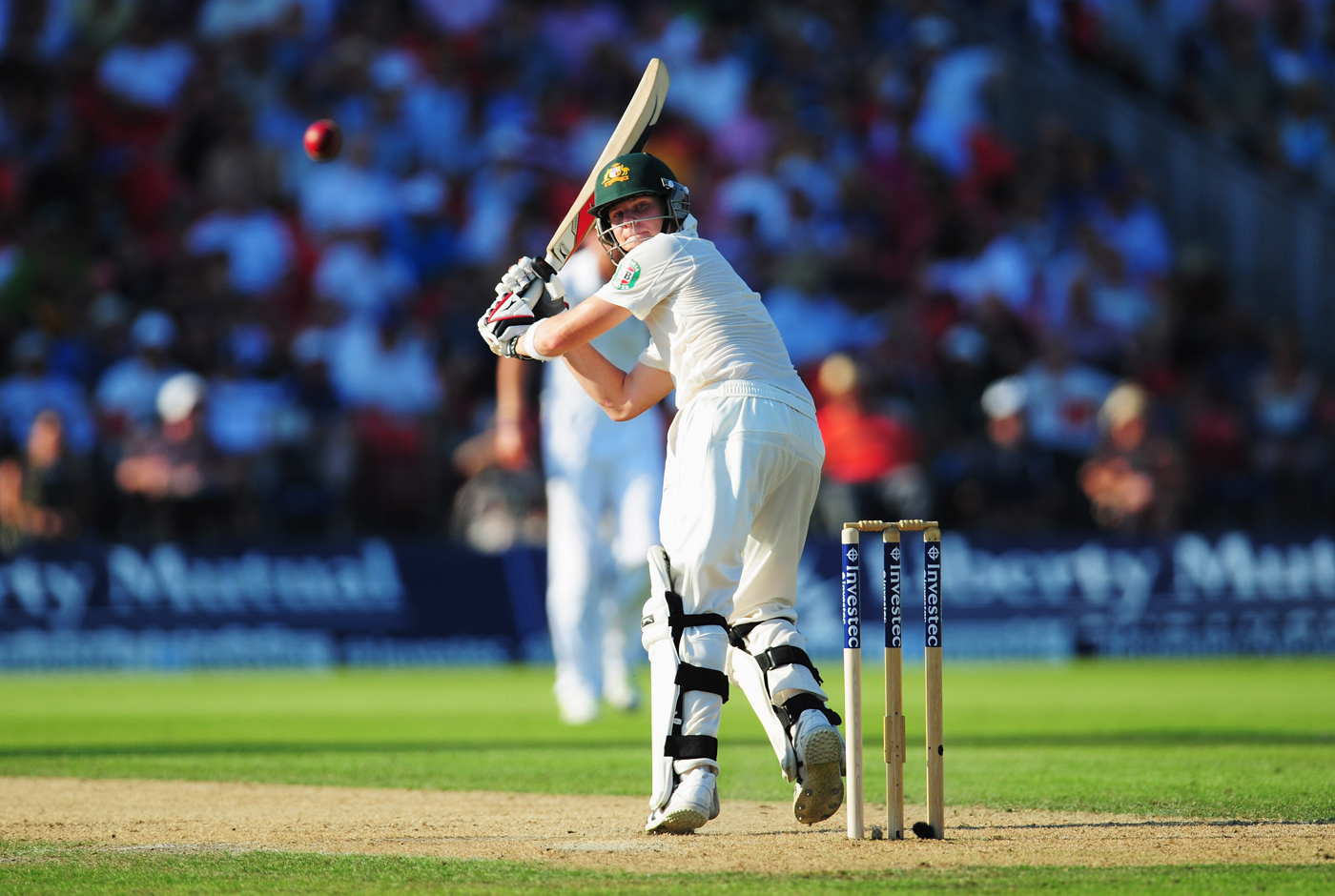"What is unlucky about being caught behind down the leg side?" asked Samir Chopra in a recent blog post. He set me thinking about a cricket problem that has puzzled me for years.
Why is it that some of the greatest batsmen in the game fail to, or do not care to, keep the ball down while glancing or flicking it on the leg side? And why are such shots not considered poor except when the batsman is caught (and even then it may be regarded as a piece of bad luck or a fantastic catch by the keeper or both), when even a thick outside edge that goes for four is described as one?
The answer is quite simple, in my opinion. You can get away with playing the ball in the air (actually, the batsman is rarely in control of the leg glance or flick off quick bowling, just as he is not with a poorly executed hook shot), because there is rarely a leg slip in position until after a missed opportunity, and the catch can often elude the wicketkeeper's grasp.
The leg slip or leg gully is rarely deployed because of the rule restricting the number of fielders behind the popping crease on the leg side to two. While that is normally understandable, especially when a bowler's stock delivery is an outswinger, I have often wondered why at the highest level of cricket, inswing bowlers tend to bowl to a three-slip, no-leg-slip field. At the college or junior level, a leg slip is quite a common sight when an inswing bowler is in operation, and that, to me, seems to make sense.
Madras batsmen of my vintage were advised by our coach KS Kannan to force short-of-length deliveries around the leg stump off the back foot rather than flick or glance them without foot movement, or with a tentative forward movement, as many of them were wont to do. This way they would also present the full face of the bat and watch the ball all the way on to it.
Kannan was then assisting the Derbyshire and England professional TS Worthington, whose approval he enjoyed. To the best of my knowledge, none of the boys in our camp followed Kannan's advice, and they merrily played the ball in the air between fine leg and midwicket whenever it landed in a sort of blind spot around the leg stump.
Two great batsmen of that era who were almost always in perfect control over such deliveries were GR Viswanath and Sunil Gavaskar. Vishy, whose wrists and forearms John Arlott once likened to those of an ironmonger, was perfectly capable of whipping short or long deliveries on the leg stump, or even the off stump, in a wide arc from mid-on to fine leg, keeping the ball down, unless he deliberately lofted it. Gavaskar was the complete master of anything on his legs, rarely missing a scoring opportunity in that region. Mohammad Azharuddin and VVS Laxman had the powerful wrists to roll firmly over the ball, virtually treating it with contempt. Sachin Tendulkar could, of course, make the ball do his bidding, rarely giving the diving wicketkeeper a hope on the leg side.
My question is, why should lesser mortals get away with edges and uncontrolled leg-side shots, instead of being punished in the same way as they are for flirting with deliveries outside the off stump? To enable a transformation, should there be a change in the laws of cricket so pace bowlers are encouraged to field leg slips?
In other words, to add yet another outrageous suggestion to ones I have already made in this column, why not raise the limit of two fielders behind the popping crease on the leg side to three? True, the rule came into being to prevent leg theory being used either to intimidate or hurt the batsman or as a negative ploy, but we now have the restriction on bouncers per over to prevent or reduce bodyline, and in any case, even under the present laws of cricket, negative leg theory is not an unusual sight in Test cricket, with left-arm spinners or legspinners sometimes resorting to it under the pretence of exploiting the rough caused by other bowlers' footmarks. Any such unfair tendency can also be countered by judicious declaration of deliveries deliberately aimed outside leg stump as wides.
While such an amendment of the rules can give the inswing bowler (and perhaps the offspinner) more teeth and another catching option in the deep off the bouncer, it will force batsmen and batting coaches to work on improving the techniques needed to negotiate well-directed inswing bowling or deliveries pitching on or around the leg stump.
In conclusion, I admit such a fundamental change will never even be considered, as it could make batting against top-quality fast bowling a nightmare. I am prepared to be proved to be absurdly wrong in my thinking by experts on the game.

No comments:
Post a Comment